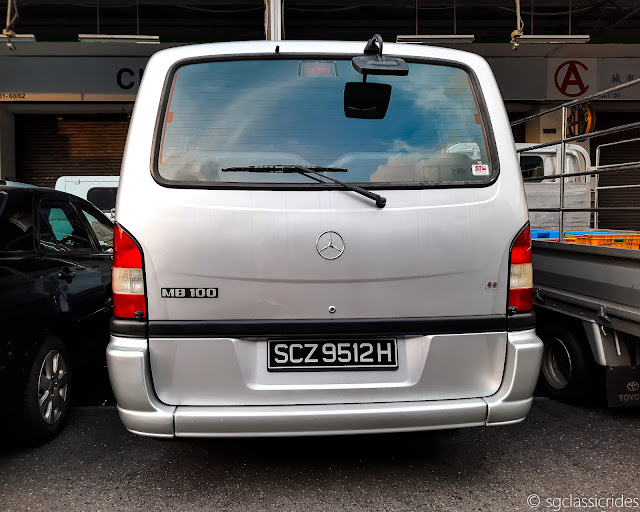Some time back, I was passing by a primary school and naturally took notice of the school buses that were waiting for their pupils. This brought back a sense of nostalgia when I recalled the buses that were present during my time, and one that caught my attention was a particular minibus with a Mercedes logo. Having associated the 3-pointed star with the noveau-rich, it was pretty strange to see one used as a children-carrier. Incidentally, I was quite fortunate to find that a piece of my history still remains with this 1999 Mercedes MB100 / Ssangyong Istana!
Ssangyong originally started out as 2 companies: Ha Dong-hwan Motor Workshop and Dongbang Motor Co, which merged in 1963 into Ha Dong-hwan Motor Co. It started out making special purpose vehicles, trucks and buses. In 1984, it was renamed to Dong-A Motor and was acquired by Ssangyong (Korean for 'double dragon') Business Group in 1986, though the name change to Ssangyong Motor happened in 1988.
Ssangyong entered into a technology partnership with Mercedes in 1991: this was to help Ssangyong develop an SUV with Mercedes technology without having to build their own infrastructure in view of the then-booming SUV market. It turned out that Ssangyong benefited greatly from this union: many of its future models drew on Daimler designs. In 1997, Daewoo Motors (now GM Korea) bought a controlling stake from the Ssangyong group but the subsequent Asian Financial Crisis put a spanner to the works: a majority stake was sold to Chinese automobile maker SAIC in 2004. This was not a happy alliance: amidst strikes and accusation of technology stealing, Ssangyong was acquired by the Mahindra group in 2011.
Ssangyong was able to record its first net profit after 9 years with the introduction of the Tivoli in 2015. Unfortunately, the good times did not last long and Mahindra cut its funding due to its outstanding debt, forcing Ssangyong to file for receivership in 2020. The first Ssangyongs were sold in Singapore in 2003 as the Musso truck, and despite being less regarded compared to Hyundai and Kia, it continues to plod on and exist in the local car market. For some reason, they see regular usage as private hire vehicles and those that are under private ownership are not numerous.
In 1995, DaimlerChrysler introduced the MB100/MB140 to the Australian and Pacific markets: it was a larger derivative of the W631 series of vans. They were made under licence by Ssangyong, where it received the surprisingly familiar name of 'Istana' ('palace' in the Malay language) in the Korean market. As such, its VIN indicates the place of manufacture as Korea. It was sold in both van and minibus versions: the minibus versions had sliding windows, concealed air-conditioning and even an electric step that would slide out for the convenience of passengers.
The MB100 was powered by a 2235 cc M161 i4 engine (uniquely for Ssangyong) allowing it to reach a top speed of 145 km/h. It was 4890 mm long and weighed 1775 kg, with a fuel consumption of 15 litres/100 km. MB140s were longer at 5340 mm, although both variants were available in the 2.2 litre and 2.9 litre engine versions.
Production of the Istana/MB100 ended in 2004, although Chinese production by Shanghai Huizhong Manufacturing Co began at that time and ended in 2010: Chinese-market units were sold as Sanxing SX6492 or SHAC SH6492. They were sold in Singapore under the Mercedes brand instead of Ssangyong and thus were distributed by Cycle and Carriage. An overwhelming majority of them were registered as minibuses and thus only had a 20-year lifespan. The number of MB100/MB140s should be countable on one hand now, and this unit is the last one that still carries a private car registration. It is currently owned by a charitable organisation and the lifespan has been extended to 2030: this is a testament to how much it has been treasured throughout its life. The mileage of 78,000 km (as of this year) is actually remarkable: some classic cars have clocked longer distances than this 'plain Jane'...
Although it may be 'just a random bus' to most people, I find greater pleasure in documenting the less remarkable parts of our automotive history (as you may already know based on my posts). Since no one would probably write about it, I figured that this could be a nice refresher for you: perhaps you have travelled in one to school in your younger days? There is no hurry to catch this 'magic school bus' on the roads since it is not going to be scrapped any time soon, but I hope you will be able to see it again!



No comments:
Post a Comment